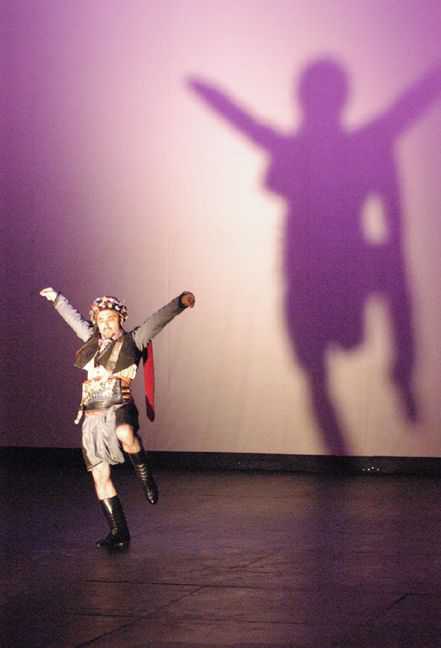
Category: Serap Korkmaz Erdoğdu
Turkish Traditions
-

TURKISH COFFEE
Coffee has created its own “culture” in Turkiye are the famous words of the great Turkish 20th century poet, Yahya Kemal. A little bit more than a casual visit to Turkiye would convince anyone that this is the case. Coffee for Turks is not simply a drink, but has its own history, its institutions (coffeehouses), its rituals, its own rules of when and how to drink it, and even a tradition of fortune-telling by reading the coffee grinds deposited at the bottom of a traditional Turkish coffee cup… Most Turks would find it superfluous to call it Turkish coffee: coffee is Turkish coffee. Turks were introduced to coffee over four and a half centuries ago. A short while after a governor to Yemen brought back to Istanbul and introduced to the Ottoman capital beans of Coffee Arabica, the metropolitan city was teeming with coffeehouses.Within a century, first Venice, than London and Paris were introduced to coffee via the Ottomans, which naturally acquired its epithet “Turkish” to become “Turkish coffee”. In some Western countries Turkish coffee is also known as Greek coffee as they were introduced to this type of coffee and coffee-making via the Greeks. Shortly after coffee was introduced to the Ottomans in 1543, it became so popular so quickly that coffeehouses were opened and small shops opened specializing in roasting coffee. Coffee roasting is called “tahmis” and to this day there is a street called Tahmis in the Eminonu neighborhood in Istanbul where the so-called Egyptian spice bazaar is located. Its name derived from the coffee shops located on this street 460 years ago. Let’s go back to what the poet said: What would a “culture” created by coffee mean (“kahve medeniyeti” in Turkish, which is hard to translate since the expression denotes something that extends beyond the more restrictive term “culture”)? Is there such thing as “culture” when it comes to coffee? We cannot answer this question directly without going into the whole experience of coffee. We will therefore approach it from various angles. First its ritualistic element: Why would coffee be associated with rituals or ceremonies? In its first aspect, this refers to the special way of making Turkish coffee. The etiquette that has developed around coffee-making, even though it has changed somewhat from former times, constitutes a set of rules coffee lovers still try to adhere. A second aspect of the ritualistic element in Turkish coffee refers to certain traditional elements that have been woven into it. One strong tradition dictates the typical (and also, to some extent, stereotypical) situation where the family of a young man visits the family of the bride-to-be to ask for their permission for their marriage. The girl whose hand is sought is supposed to bring coffee on a coffee tray, and traditionally this is the only time she has a say in the whole affair. The vote she casts is expressed in terms of how sweet the makes the coffee, ranging from extra sweet (a definite yes) to “no sugar” (a definite no), and at times to salty coffee, a step shorter than not appearing at all. This tradition notwithstanding, to sweeten coffee with sugar is a relatively new usage (“new” considering a tradition of about four and a half centuries.). Turks used to drink their coffee without any sugar. Instead, it was customary to eat or drink something sweet either before or after the coffee, sweetened fruit juices known as sherbet, fruit preserves, Turkish delight, sultan’s paste, halva, or other confectionery.Bir açıklama ekle
-

Zeybek “Harmandalı”
Zeybek (Harmandalı) dance is part of the Turkish Culture. This dance is the symbol of courage and honour.

Zeybek’s were people living in Asia Minor. The majority of them came from Yörük and Türkmen villages. Before the establishment of the Republic of Turkey, large concentrations of Zeybek’s could be found in western Anatolia particularly in İzmir, Burdur, Afyon, Kütahya, Uşak, Denizli, Aydın, Isparta, Manisa, Mugla, Antalya, and the Balıkesir area. Zeybeks were mountain warriors of Western Anatolia during the 13th – 19th centuries. Zeybeks generally had Turkmen and Yörük origins. They acted as protectors of village people against landlords, bandits and tax collectors. A leader of a Zeybek gang was called “EFE” and his soldiers were known as “Kızan”. “Kızan” was generally used for untrained Zeybeks. There was generally a tribe democracy in group. Decisions was taken in a democratic way, after the decision was taken “EFE” has an uncontroversial authority. They followed definite rituals for all actions; for example, the promotion of a “kızan” to zeybek was very similar to Ahi rituals.

Zeybeks had a special dance in which performers simulated hawks. Romantic songs about their bravery are still popular in Turkish folk music. The Yatagan sword was their primary weapon, but most of them carried firearms as well.
-

Family Relations
Family Relations are very close among Turks. They respect their elders and support each other in every way possible. Parents do support their children financially until they get married. When the child gets married the financial support may continue but it is expected that the new family could earn enough to take care of themselves. Children care very much about their elders. They take care of their elders and support them when they get old or sick both financially and emotionally. This close relationship is a kind of boomerang, elders support children when they are young, children support their elders when they are old..

-

Turkish Traditional Archery (flight shooting)
The history of the arrow and bow of the Turks stretches back to very distand times. In the legend of Oguz Khagan we see it taking its place either as a means of war or as a symbolic element.In Central Asia the arrow and bow, together with the sword, whether in hunting or wars was a most important weapon. The sword was used as the close range weapon and the arrow and bow as the long range weapon.
Seljuks have opened the doors of Anatolia to Turks. It was the skill of Seljuk mounted archers that brought them to their destiny. The historians of that era described them as an highly effective, moving force with the long-ranged weaponry. They were hesitating to “impact” the enemy and to get into close quarter fighting. What they preferred was a lightning-fast “attack and retreat” strategy based on horseback archery skills. Their shorter recurved bows were easier to handle on horseback and gave the warriors great flexibility.

-

Tespih
It is often seen in Turkey. Particularly men carry them, they finger the string of beads while drinking tea and chatting. Originally prayer beads, Muslims use the Tesbih to recite Allah’s name with every bead that passes through their fingers. Nowadays, Tespihs are also used as accessories, decoration or, in most cases to occupy the hands. The word Tespih originates from the word Süpah, which means ‘reciting the glory of God’. It is an aid to keep count of prayers. In the beginning of the Islam, believers used small stones which later developed into a Tespih. The Christian pilgrims probably adopted the Tesp
 ih from the Muslims and introduced the rosary in Christianity. A Tespih is composed of 99 beads, representing the 99 names of Allah. The string is used to praise Allah as follows: 33 times the word ‘Süpannalah’ is spoken, which means ‘Praise be to God’. Then ‘Elhümdullilah’ is repeated 33 times, meaning ‘Glory be to God’. For the final 33 beads ‘Allahu Akbar’ is repeated which means ‘God is most great’. After these repetitions a final prayer is said, bringing the total number of prayers to one hundred. In the Koran the Prophet Mohammed said: ‘Whoever completes a hundred, by telling these beads, all his sins shall be forgiven.’ Some Tespihs have 33 beads. They are used in the same way but are more manageable.”
ih from the Muslims and introduced the rosary in Christianity. A Tespih is composed of 99 beads, representing the 99 names of Allah. The string is used to praise Allah as follows: 33 times the word ‘Süpannalah’ is spoken, which means ‘Praise be to God’. Then ‘Elhümdullilah’ is repeated 33 times, meaning ‘Glory be to God’. For the final 33 beads ‘Allahu Akbar’ is repeated which means ‘God is most great’. After these repetitions a final prayer is said, bringing the total number of prayers to one hundred. In the Koran the Prophet Mohammed said: ‘Whoever completes a hundred, by telling these beads, all his sins shall be forgiven.’ Some Tespihs have 33 beads. They are used in the same way but are more manageable.” -

Turkish Simit
Simit is one of the most traditional and common types of Turkish food. It is made from flour, formed in the shape of a ring and cooked in an oven, and is typically covered with a large quantity of sesame seeds. Simit is both inexpensive and flavorful. One can find fresh simit at every hour of the day in bakeries and shops which sell baked flour goods. You also might encounter simit merchants, with their glass-pane wagons, walking along the city’s bustling streets. In the past few years, several simit chain restaurants, which only sell different types of simit have become popular. Feeding the seagulls with simits, a typical Turkish fun. You will see seagulls following the boat at the same speed as the boats for a while so they will look as if they are hanged from the sky by some invisible cord.

